Padley Gorge and Higger Tor Loop - Easy Peak District Walk
See some of the highlights the Eastern Peaks has to offer — Celtic rainforests, Iron Age forts, and derelict industrial buildings — on this circular walk through Padley Gorge to Higger Tor.
Sometimes, a place is popular for a very good reason. Like the Grand Canyon or the Salkantay Pass to Machu Picchu, some landscapes defy photography — they can only be truly appreciated with your own senses.
Personally, I’d add Padley Gorge, the starting point of this trail, on this list. It may be most famous for its tight-knitted ancient woodland, ablaze with autumn colour come October, but Padley is far from a one-season wonder.
Winter unfurls a cloak of mist through lush moss curtains and lichen-speckled boulders. A cacophony of birdsong awakens Padley for a verdant spring, and come summer the gorge’s woodland offers a welcome respite from the long sunny days.
This hike takes in more than just Padley Gorge, tracing a loop across other iconic Eastern Edges of the Peak District: Higger Tor, Owler Tor, Carl’s Wark, Millstone Edge, and Lawrencefield. These are landscapes invite playfulness with their moonscape-like rock formations you can’t help but climb.
Long before social media, people came here for spiritual connection, survival, and stone. Today, these places tell stories layered in gritty contours and leafy canopies.
⚠️Before you start hiking…
This route will take you through several sensitive environments in the Peak District. To preserve their beauty so you and others can enjoy them, please don’t do the following:
Build rock stacks: Even moving small stones can worsen erosion, degrade soil, and disturb wildlife habitats. Plus, when 100+ people do it, the Peaks looks more like a sculpture garden than a national park.
Climb boulders when wet: Grit is known for its toughness but once wet it crumbles faster than a New Year resolution in February. These rocks took 300 million years to reach their iconic quirky shape; let’s not undo their hard work in an afternoon.
Carve into the rocks: It causes long-term damage and leaves an ugly scar. If you want to leave your mark on the environment, take positive action, like taking trash you find home with you, or be a conservation volunteer.
Temperate rainforests
It’s hard to think of Britain as a destination for rainforests, but swathes of the Atlantic coastline — from the top of Scotland down to Cornwall — once stretched across the country.
Centuries of tree-felling, mining, and sheep grazing means only 1% of this forest remains. Padley Gorge is one of the few survivors.
In fact, it is one of the most inland examples of temperate rainforests in the UK. With its high humidity, steady rainfall, dense oak and birch canopy, and thriving undergrowth of mosses and lichens, the gorge offers the perfect conditions for rainforest life.
Temperate rainforests like Padley Gorge held spiritual significance to Celtic peoples. Given the proximity of stone circles to the north and east of Padley Gorge, it’s not hard to imagine druids and Celtic tribes quietly slipping into this verdant world.
Ancient stones
Head further along the trail, passing the majestic obelisk of Mother Cap, Owler Tor, Carl’s Wark and Higger Tor. A liberal trail of millstone breadcrumbs will lead you on the way.
Approaching Carl’s Wark, you may notice its craggy face differs somewhat from neighbouring Higger Tor. Debate abounds as to Carl’s Wark’s purpose, but many agree it was once an Iron Age fort due to its panoramic views and natural ramparts.
That sense of deja vu? Carl’s Wark was the backdrop for a scene in the 1987 film The Princess Bride. In fact, much of the film was shot in the Peak District - you can see Buttercup’s Farm and Westley and Fezzik’s dueling location on my Nine Stones Circle Walk.
Industrial relics
Looping back towards Millstone Edge, you can glimpse the Peak District’s industrial heyday. As you walk along Millstone Edge you will see remnants of old quarry buildings and works. From the medieval period till the 19th century the rock here was quarried to be used for millstones.
When demand for white bread surged and chert stone became the standard, the gritstone industry collapsed practically overnight. Rows of millstones in Lawrencefield sit, waiting to leave for the millhouses.
However the fortunes of Padley Gorge and the surrounding area had one last stroke of industrial good fortune. Bolehill, just north of Padley Gorge, played a crucial role in the construction of the Derwent and Howden dams. Starting in 1903, the site became a flurry of tents, temporary railways, and stone extraction. By 1914 it was silent again.
Today, nature has reclaimed much of it. Echoes can still be heard in the fireplaces, storehouses, and carved remains whispering their history beneath the bracken.
This trail is a time capsule layered with natural wonder, ancient belief, and industrial ambition.
To walk it is to trace the steps of druids, miners, hikers, and merchants. It’s a reminder that landscapes are not just scenery, they’re living, evolving archives of who we were, who we are, and what we might still become.
See this hike for yourself — download the route via OS maps and follow the app’s instructions for easy navigation. Let me know how you found it via the comments section at the bottom of this post!
🥾Route summary: Padley Gorge to Higger Tor Loop
Distance: approx. 8.5km / 5.3 miles
Time: 2.5–3.5 hours depending on pace and stops
Start/end point: Grindleford Station (ideal for public transport), but paid parking is available
Route highlights: Padley Gorge, Mother Cap, Owler Tor, Carl’s Wark, Higger Tor, Millstone Edge, Lawrencefield
Terrain: Woodland trails, rocky paths, gritstone edges
Facilities: No toilets available, unless you visit a cafe in Grindleford
Accessibility: Some rocky sections and boggy areas





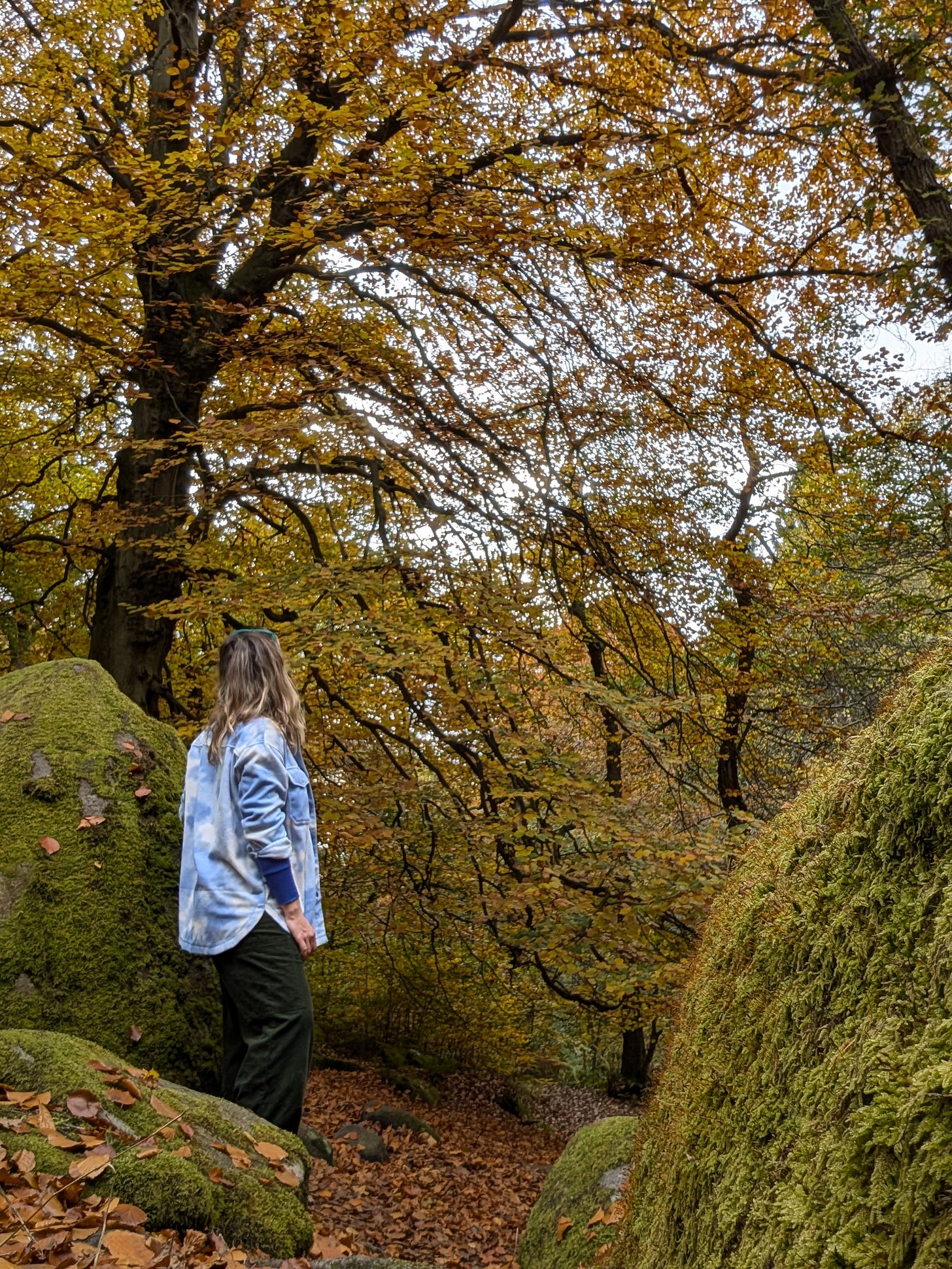
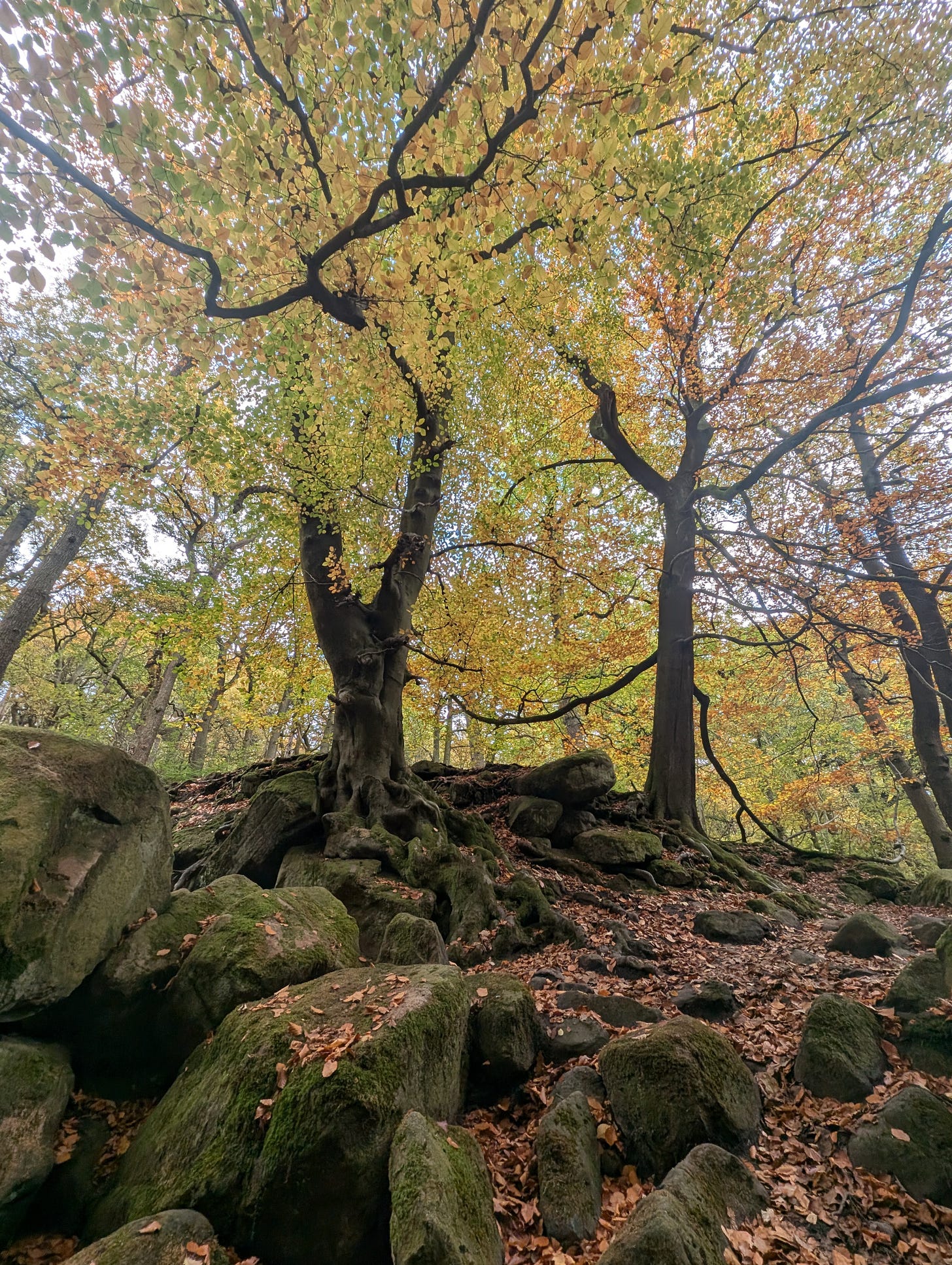
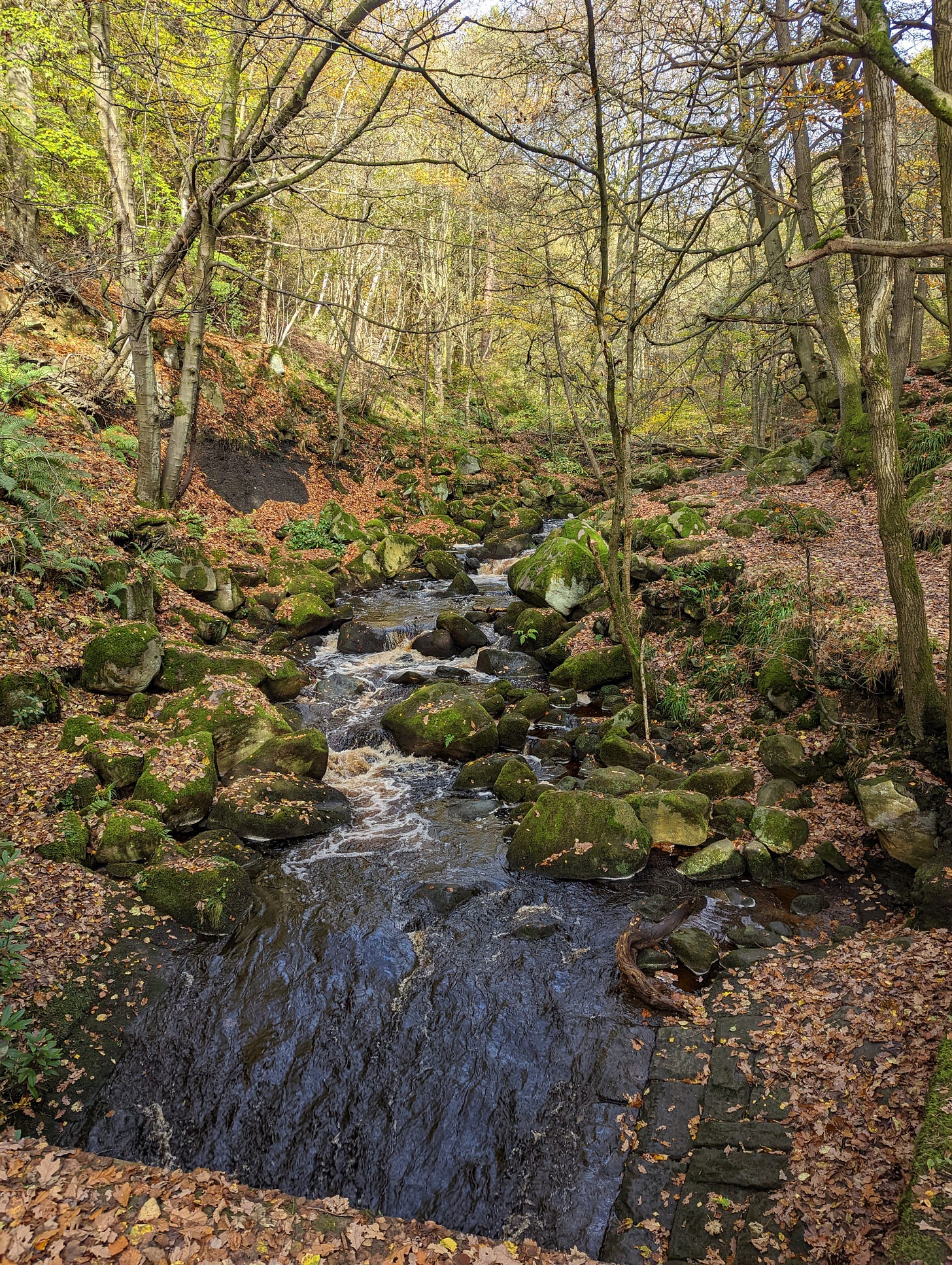

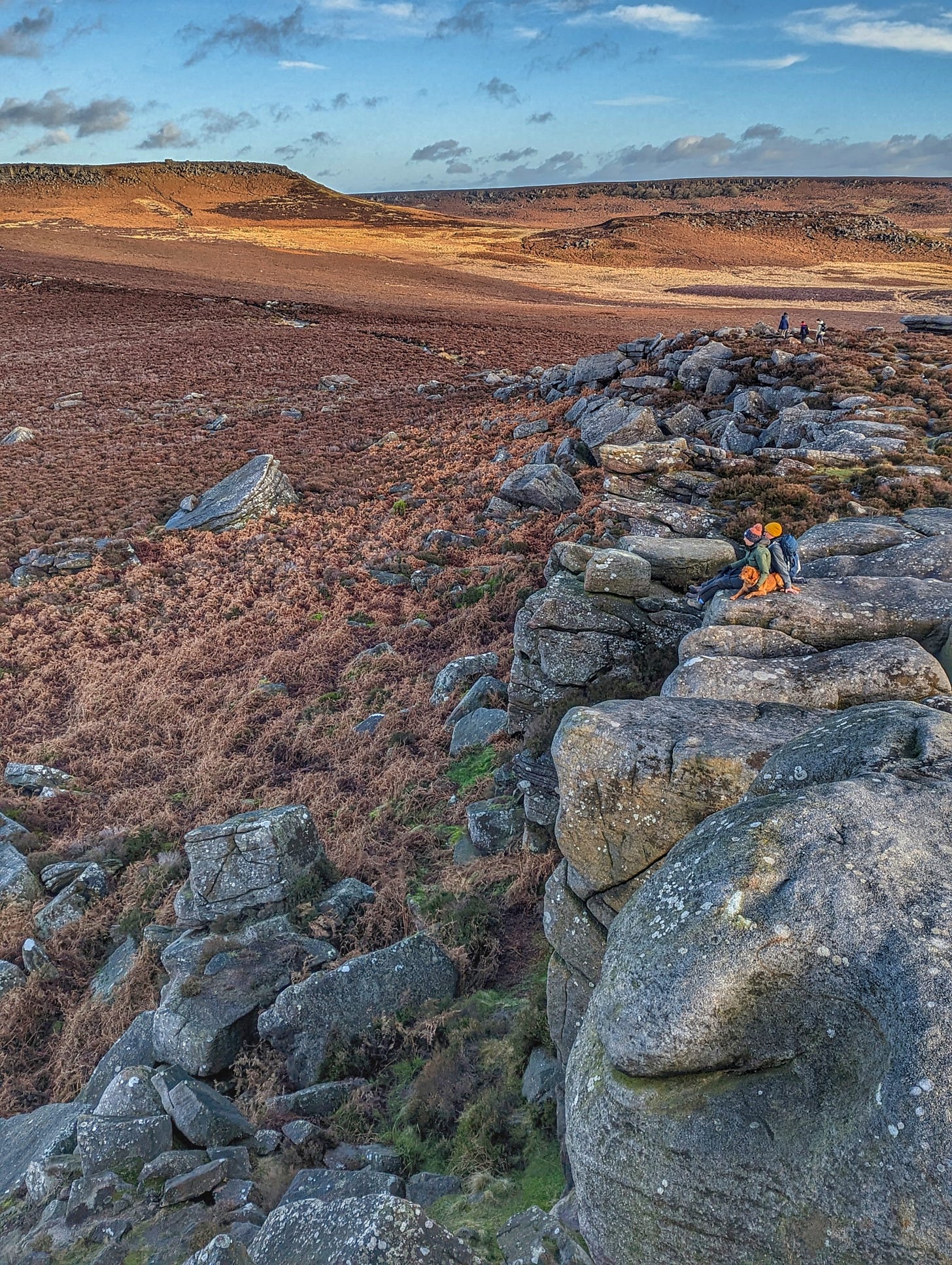

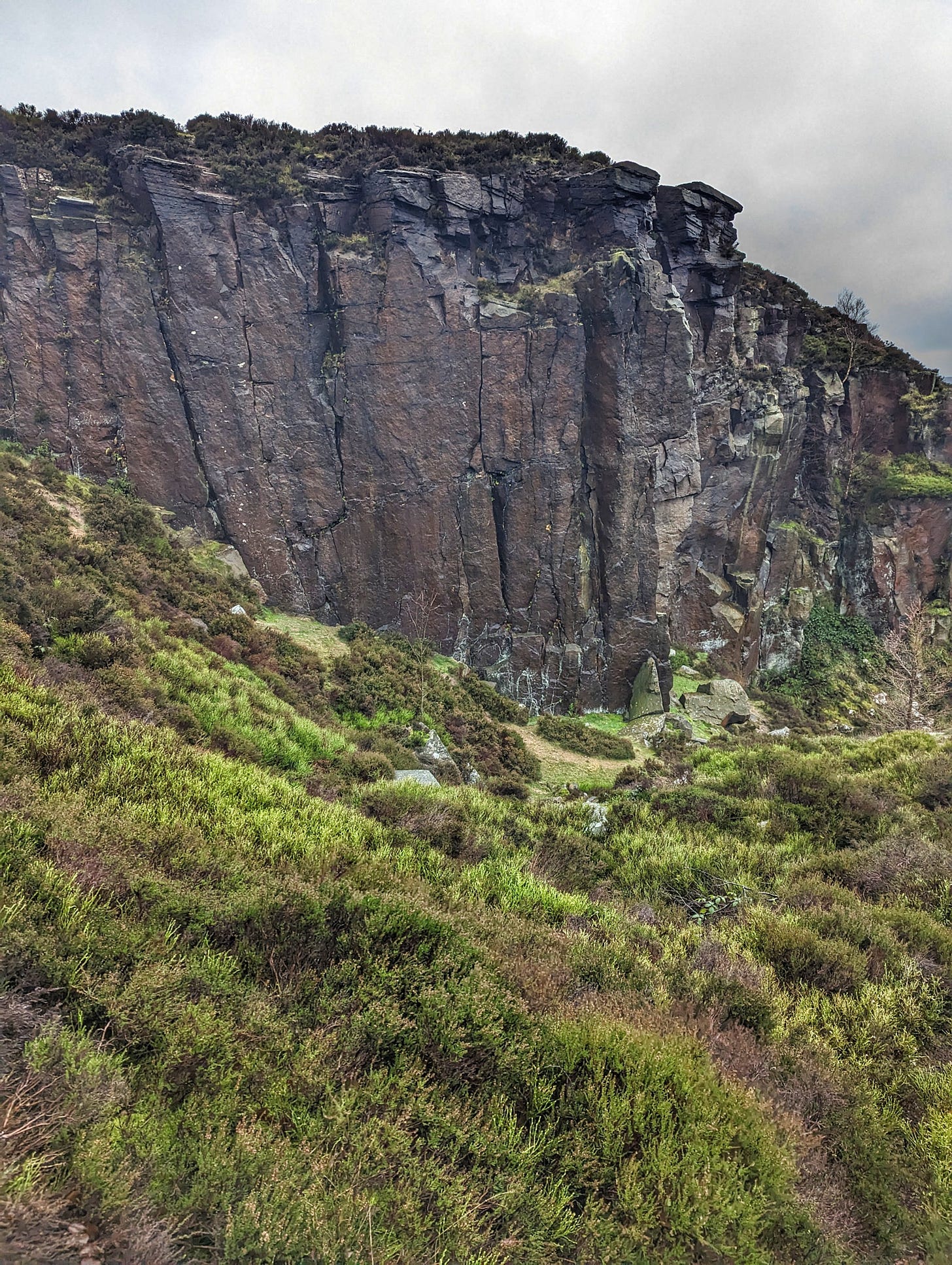
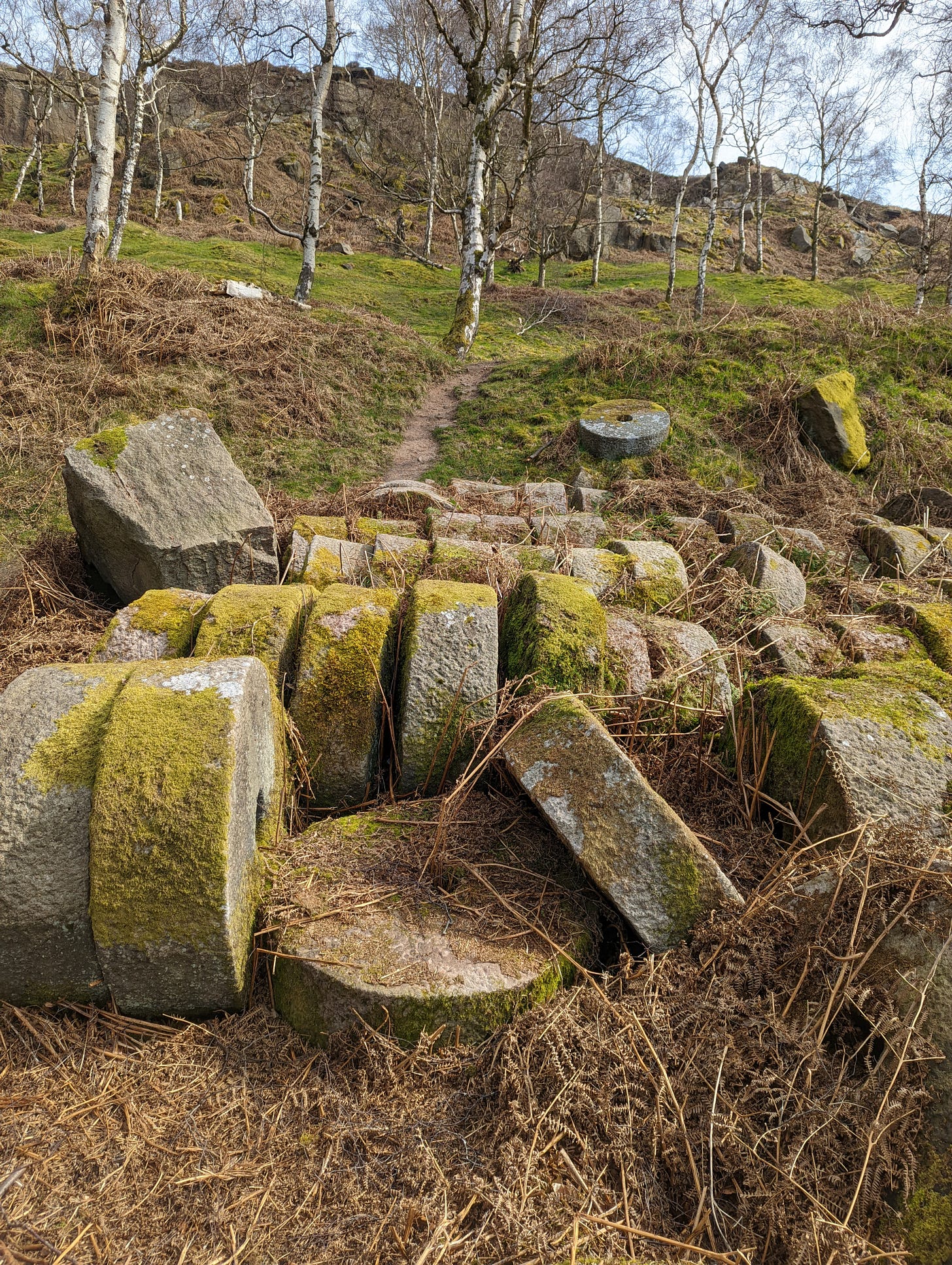


What a gorgeous spot for a hike! Truly beautiful--and those millstones and rock formations. Wow!